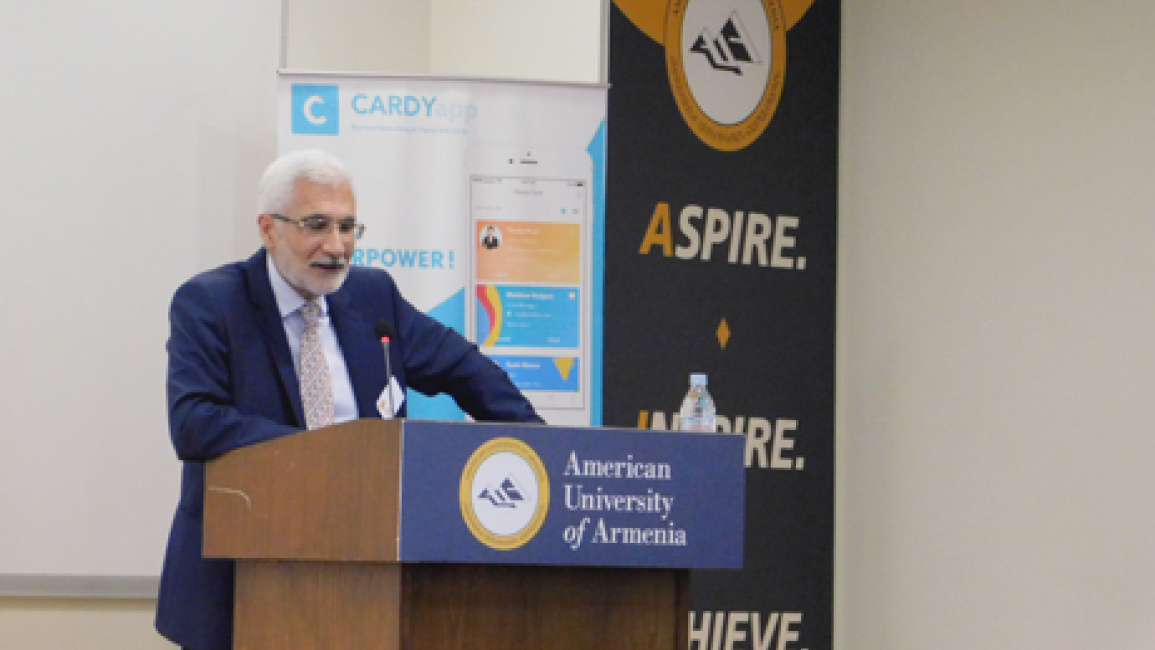- Main
- Node
- AN ACADEMIC ATTEMPT TO DEFINE THE REVOLUTION: THE INTERNATIONAL CONFERENCE "ARMENIA 2018: REALITIES AND PERSPECTIVES " KICKED OFF
June 22, 2018 | 17:16
Science
AN ACADEMIC ATTEMPT TO DEFINE THE REVOLUTION: THE INTERNATIONAL CONFERENCE "ARMENIA 2018: REALITIES AND PERSPECTIVES " KICKED OFF
The International Conference "Armenia 2018: Realities and Perspectives" was launched today at the American University of America, the main goal of which is to bring the political events in Armenia to the academic field through professional analyzes and to explain the public realities we have now in the scientific language.

The conference was organized in collaboration with three universities, Yerevan State, Armenian American and Beirut Haykazyan, as well as the NGO "For Democracy Development", Konrad Adenauer Foundation, "Bun TV" online channel, Khnko Aper Children's Library and "Galust Gyulbekyan Foundation.
Both Armenian and foreign experts were invited to the conference to study the international experience.
YSU Associate Professor, founder of the Armenian Center for Humanitarian Research Ashot Voskanyan welcomed the participants and expressed happiness that the speakers at the conference entitled "Armenia 2018: Realities and Perspectives" are mostly Armenians because the events in Armenia should be discussed with those people, who have witnessed all that.
"Recently, Armenia has been touched upon much," - said Ashot Voskanyan, - but there was some internal anxiety that was officially presented, it was not always reflected what actually existed. There were two types of discourse in the country: national and western. And we thought whether it would be possible to organize such a meeting, which would represent Armenia at the scientific level as it is," - added A. Voskanyan.
YSU Vice-rector Gegham Gevorgyan also made a welcoming speech, who touched upon the current events in Armenia as well as the mistakes made in the analytical field: "In my opinion, over the past three decades, our reality has had two major shortcomings that have seriously hindered our progress. The first is that we have delayed the solution of our internal problems by the presence of external problems. The second observation, which also significantly hindered the development of the country and society, is that the black and white colors, good or bad, dominate in the social, political analyses. Apart from these, it is difficult to find other definitions. Meanwhile, to solve these and other problems it is important to make a balanced reference, where the bad will be next to the good, and the advantage will be next to the omission.
In the end of his speech Gegham Gevorgyan suggested somehow in a manner of a joke to write projections "Armenia 2020". The participants noted that it is a complicated task, because just months ago nobody could predict such a course of events in Armenia.
It is also interesting to note that when the organization of the conference started, there was a completely different political environment in Armenia, and the aim of the conference was to define the Armenian political present in the academic environment, and now the task has changed. One of the important goals of the conference is to bring the political struggle in the street to the academic field and to form a platform for discussion. Stepan Danielyan, chairman of the Cooperation for Democracy NGO, also spoke about the importance of this issue, who considered the fact that after the revolution it was necessary to start political debates, television and public debate on the situation, while none of the mentioned cases occurred, instead, people are waiting for the next disclosure of the NSS.
"The predictions about the future will not be so unreal or unbelievable if we can understand and analyze our present. We need to understand what kind of society we want to have, what we build and what our vision of the future is," - Stepan Danielyan said in his speech.
Today and tomorrow the participants of the conference will make reports and discussions on the economic, political and public realities of the Armenian society, trying to develop possible models for their development.

